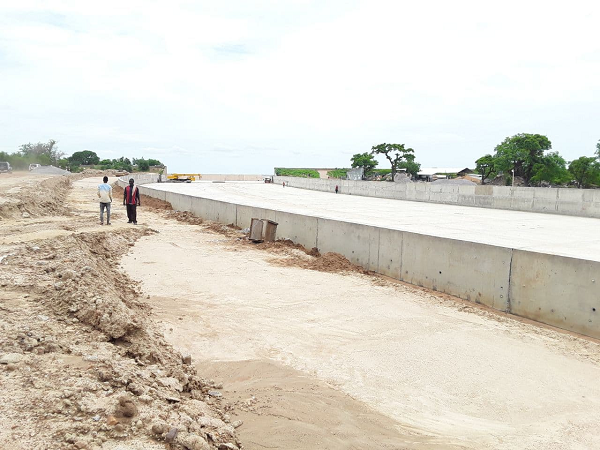
Tono irrigation reconstruction ready in October
The rehabilitation of the spillway channel and ancillary works of the Tono Irrigation Scheme in the Kassena Nankana Municipality in the Upper East Region is 85 per cent complete.
Barring any hitches, it is expected to be completed by the end of October this year.
The rehabilitation and modernisation of the irrigation scheme — which constitutes the original work — started on October 16, 2018, but the spillway channel got damaged following continuous rains and the spillage events in October 2019, just some 12 months into the 18-month construction period.
The work includes the desilting and redirection of the main drain of the Tono River.
Work on the spillway was not part of the original rehabilitation contract, but is currently being executed by the Ghana Commercial Agricultural Project (GCAP), funded by the World Bank and the Government of Ghana under the Ministry of Food and Agriculture.
Key features of additional work on the spillway channel and ancillary works of the irrigation scheme include redesigning and reconstruction of the about 500-metre long spillway channel, which has an average width of 50 meters, with a concrete channel and concrete walls on either side.
The Tono Irrigation Scheme was started in 1975 and completed in 1985.
The 3.147-kilometre long dam wall, constructed across the Tono River, has created a reservoir covering 1,860 hectares, with a maximum capacity of 93 million cubic metres of water.
It was designed as a dual purpose dam --for irrigation and domestic water supply.
The domestic water supply aspect of the project is currently being executed.
![]()
Benefits
The Tono Irrigation Scheme is expected to create direct and indirect jobs, and facilitate better adaptation to climate change, among other benefits.
It is also expected to inspire an increase in the cultivation of paddy rice, tomatoes and soya beans.
It is expected that yields of paddy rice will increase from 4.5 tonnes to 6.0 tonnes per hectare (up by about 33 per cent), which will eventually translate into an annual production of 19,359 metric tonnes of paddy rice.
Impressions
At the 28th Progress and Technical Meeting at Tono last Friday, the Operations Manager of GCAP, Mr Philip Daniel Laryea, said the monthly technical meetings were part of the monitoring and supervision programme to ensure the smooth execution of the work.
The Deputy Chief Executive Officer in charge of Engineering at the Ghana Irrigation Development Authority, Mr Stephen Maclean, expressed optimism that farmers would soon reap maximum benefits, including higher income levels, upon the completion of the project.
Two beneficiary farmers into rice and maize cultivation, Robert Kwame Abokah and Tonose Adoliba, noted that the completion of the project would offer farmers a more efficient utilisation of water to produce more to increase their income.
